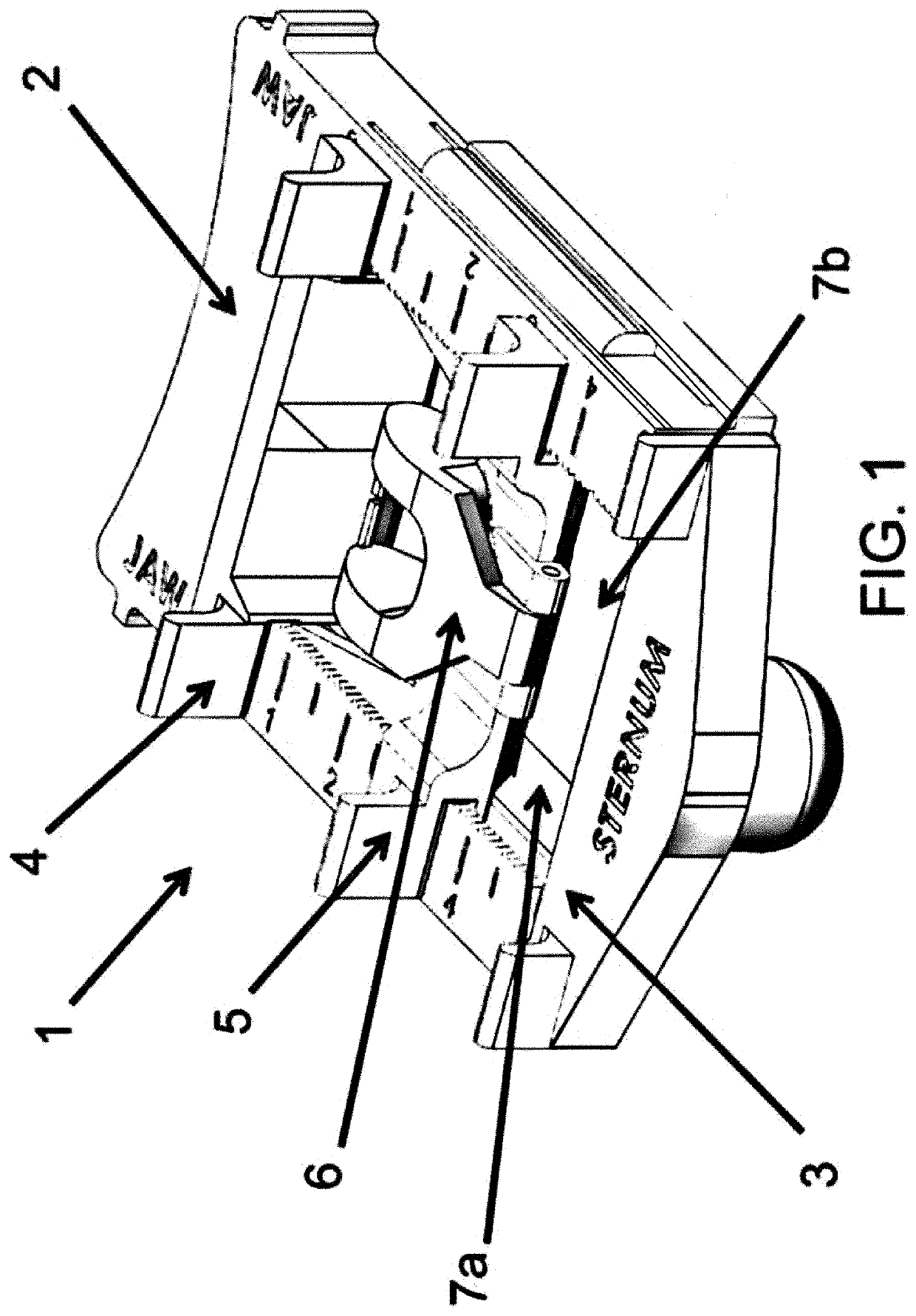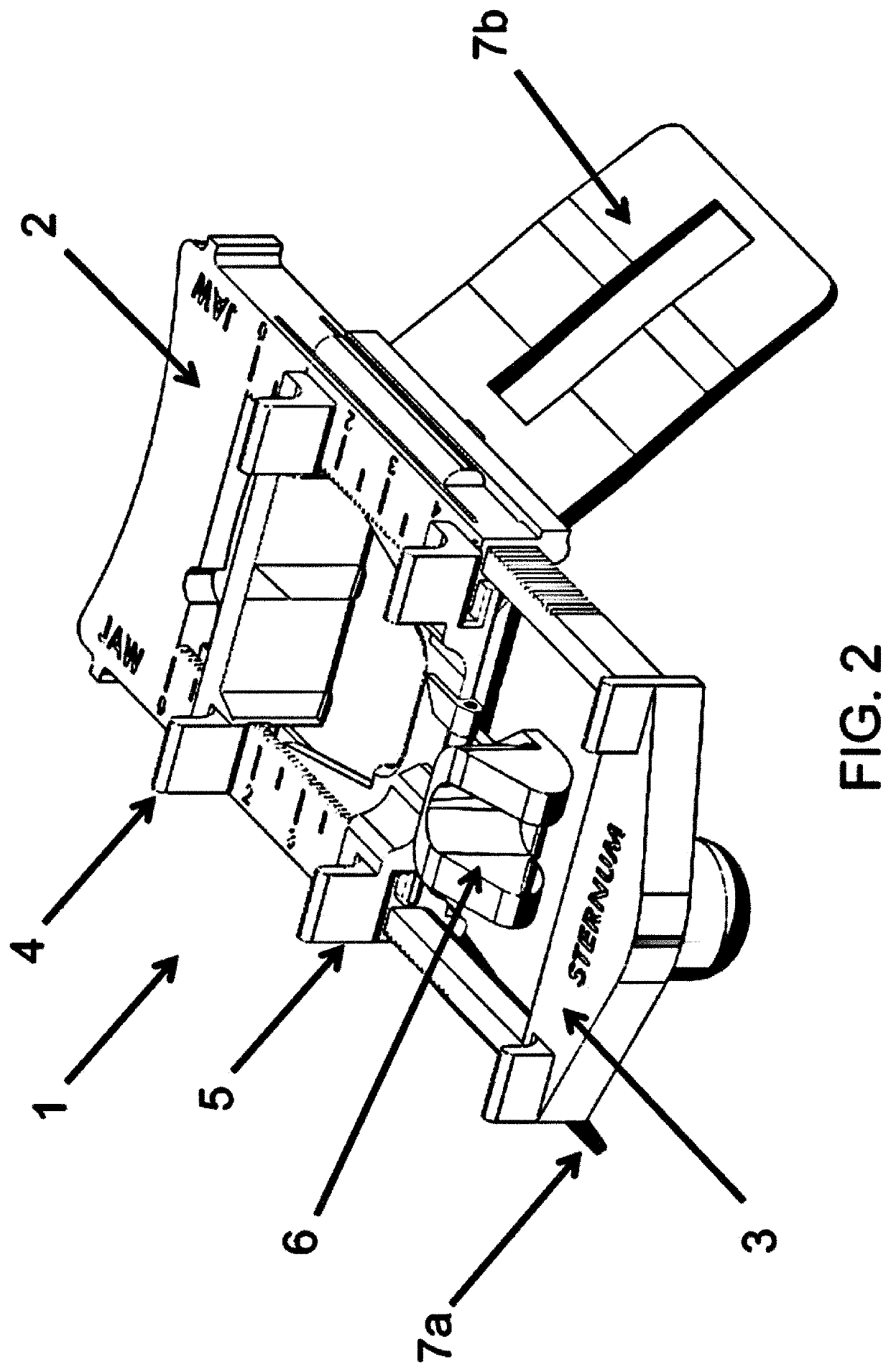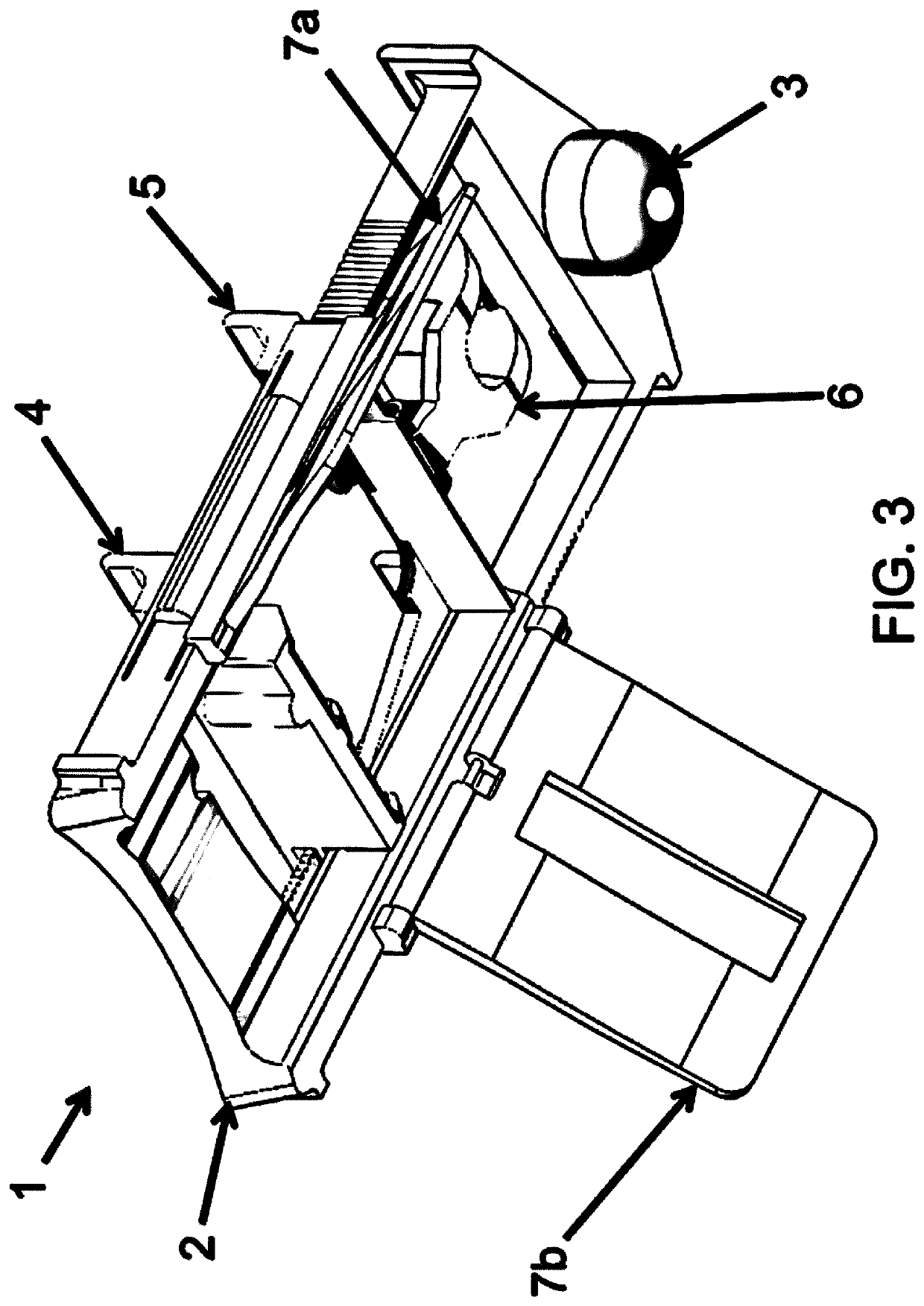Assist device for medical procedures
a technology for aiding devices and medical procedures, applied in medical devices, stereotaxic surgery instruments, medical devices, etc., can solve problems such as esophageal perforation, subcutaneous emphysema, hemorrhage, mistakes or failures in cricothyrotomies, etc., to prevent damage to the posterior trachea, improve the effect of the procedure, and be easily and safely removed
- Summary
- Abstract
- Description
- Claims
- Application Information
AI Technical Summary
Benefits of technology
Problems solved by technology
Method used
Image
Examples
Embodiment Construction
[0043]The present invention is an assist device for performing medical procedures.
[0044]In one embodiment, an adjustable airway creation assist device (ACAD) is disclosed which uses physical reference points of the anatomy for alignment, stabilization, and intubation guidance, whereas the medical procedure to create the airway may be a cricothyrotomy or tracheostomy. The ACAD is easy-to-use by both skilled and unskilled personnel, highly effective, and has broad applicability. In another embodiment, a chest decompression assist device is disclosed for drainage of air or liquid from the chest which uses physical reference points of the anatomy for alignment, stabilization, and decompression needle guidance.
[0045]As seen in FIGS. 1-4, a preferred embodiment of the assist device comprises a ACAD 1 including a laryngeal base 2, a sternal stabilizer 3, a thyroid locator 4, a cricoid locator 5, an insertion guide 6, and two lateral stabilizers 7 (a & b). The laryngeal base 2 forms the inf...
PUM
 Login to View More
Login to View More Abstract
Description
Claims
Application Information
 Login to View More
Login to View More - R&D
- Intellectual Property
- Life Sciences
- Materials
- Tech Scout
- Unparalleled Data Quality
- Higher Quality Content
- 60% Fewer Hallucinations
Browse by: Latest US Patents, China's latest patents, Technical Efficacy Thesaurus, Application Domain, Technology Topic, Popular Technical Reports.
© 2025 PatSnap. All rights reserved.Legal|Privacy policy|Modern Slavery Act Transparency Statement|Sitemap|About US| Contact US: help@patsnap.com



